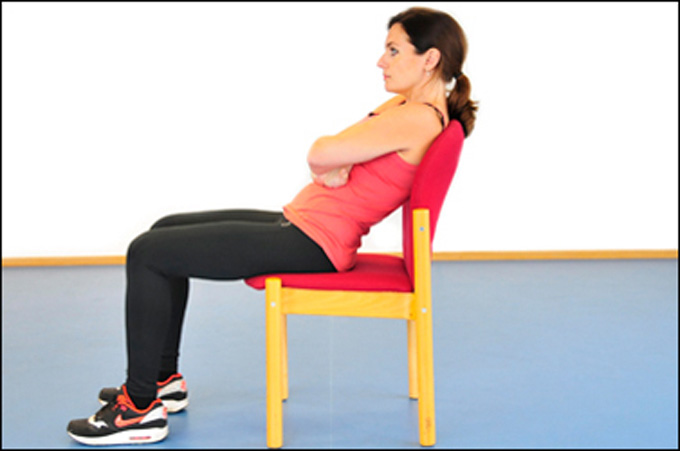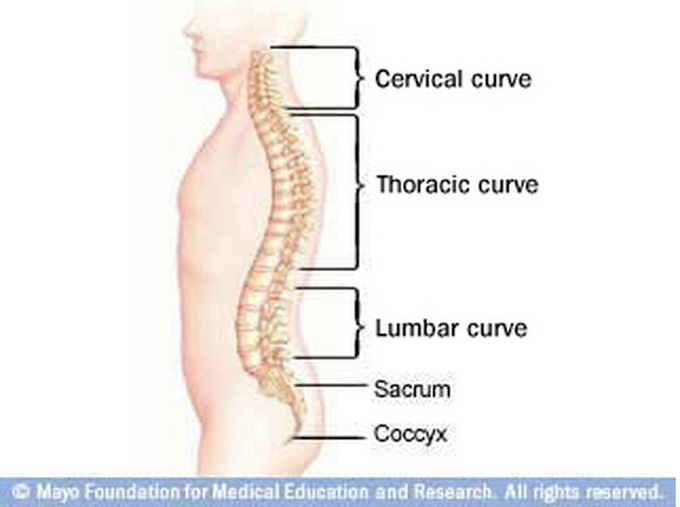The Health Consequences of Poor Posture

By:
We’ve heard that our sedentary lifestyles are extremely unhealthy, and may cut short the 100-year-lives that recent decades of technological and medical advances might otherwise enable. If we’re sitting eight to ten hours every day for work, does it really matter how we sit? Or stand, or sleep, for that matter?
The dangers of bad posture
As I type this, a smallish, inflated rubber ball is trapped between my mid-back and the cushion of my chair. I’m sitting in this position, almost like a strangely warped version of the Princess and the Pea fairytale, in an attempt to try to correct my bad posture habits.
I made an appointment to see a physical therapist because of pain in my neck and shoulder that I’d been experiencing for months. I attributed the pain to overuse or misuse of free weights during classes at the gym, but it turned out that this was only part of the story. I learned that I also have a tendency to round my shoulders and jut my chin forward, which, while not uncommon, is not conducive to long-term health, flexibility and mobility.
I spoke with my physical therapist, Joanne Danssaert of Solana Beach Physical Therapy, about the potential consequences of poor posture habits.
“Bad posture can lead to decreased vital capacity or your ability to inflate your lungs,” said Danssaert. “It can reduce the elasticity of your ribcage, and it can cause shortening muscles that can make coming out of those postures very difficult.”
Danssaert described a body conditioned by years of poor posture as being “shrink-wrapped,” in the sense that it changes shape based on posture habits and which muscles are used—or not used.
“If you are in a poor position for a long period of time, your body makes changes structurally and it's very difficult to undo that,” said Danssaert. “Muscles become overstretched and they're not as efficient.”
Tips for improving posture.
Good posture, according to the Cleveland Clinic, affords the following benefits: “Helps decrease the abnormal wearing of joint surfaces that could result in arthritis, decreases the stress on the ligaments holding the joints of the spine together, prevents the spine from becoming fixed in abnormal positions, prevents fatigue because muscles are being used more efficiently (allowing the body to use less energy), prevents strain or overuse problems, and prevents backache and muscular pain."
If you’re interested in an objective evaluation of your own posture, Danssaert recommended asking someone to take a picture of your seated profile. Ideally, you should be able to draw a straight line from your ears through your shoulders through your hips, Danssaert said, though "most of us are going to have a deviation with their neck forward and their chin raised slightly, and most people are going to have their shoulders forward in front of their hip joint.”
“Most of the patients we have that have pain in their mid-backs and cervical spine lack those little muscles that retract our scapula back,” said Danssaert. “Back extension exercises are extremely healthy and helpful for maintaining good posture, if you can get on your stomach and do some exercises that work those muscles.”
Additionally, the Mayo Clinic provides a slideshow of images illustrating the three natural curves of the back and methods for taking stock of alignment:
The United Kingdom’s National Health Services website also offers pictures of common posture mistakes and suggests exercises for strengthening weak muscles:
 National Health Services - nhs.uk
National Health Services - nhs.uk
Posture myths and misconceptions
The dangers of “text neck” (caused by constant tilting of the head downward to look at a phone) and the much-lauded benefits of power postures are two of the last few year's most buzzworthy posture headlines. Yet, as The Atlantic pointed out regarding text neck and Vox highlighted in respect to power postures, both phenomena may be overhyped.
The importance of plain-old, good posture is nowhere near as flashy—after all, your mom has probably been telling you to stand up straight forever. (She likely nagged you just as often to make your bed, which, according to self-help guru Gretchen Rubin, is an important step towards improving happiness).
Yet given the many health risks of poor posture and the many benefits of improving posture, "stand up straight" may be one admonition worth heeding, especially considering that we spend much more time sitting than most of our ancestors did. According to CNN, "Prolonged sitting, meaning sitting for eight to 12 hours or more a day, increased your risk of developing type 2 diabetes by 90%."
Perhaps most distressingly, this study, from the Annals of Internal Medicine in Toronto, reported that sedentary lifestyles are dangerous even for those who exercise regularly, though exercise does help mitigate the health risks.
For many people, eight to 12 hours encompasses work time only, and unfortunately, sedentary leisure time can be just as dangerous for health. A 2011 study from the University of Queensland in Australia found that “every single hour of TV viewed may shorten life by as much as 22 minutes.”
Making the most of our sedentary lifestyles.
I interviewed Dr. Tim Church for a previous article about how to reverse the upward trend of American physical inactivity.
“I don't think it's more treadmill desks, believe it or not. I don't think that's the answer,” said Dr. Church. (Though standing desks are always an option). “I personally think we have to take more of a proactive stance from a workplace perspective, helping people commute to work either via bike or walking, being more flexible on lunch hours, having standing breaks.”
Until the advent of more flexible and active offices, it’s important to take control of posture and level of physical activity while at work. Danssaert recommended taking frequent breakss and setting up the laptop screen so it’s either at eye level or slightly below eye level.
Danssaert also suggested trying the ball-behind-the-back method that I’m currently attempting to master.
“Use a ball behind your bra level to remind you to lift your thorax up (your thorax being your mid-back) so that you are sticking your breast bone out, and leading with your forehead as opposed to leading with your chin,” she said.
Technology has provided us with incredible tools to improve and elongate our lives, yet it’s also given us a hundred reasons to be sedentary and hunched forward. With increased awareness and effort, and a small rubber ball, it just might be possible to reverse years of bad habits and keep me staring at my laptop for decades to come.

 Mayo Foundation for Medical Education & Research -
Mayo Foundation for Medical Education & Research -